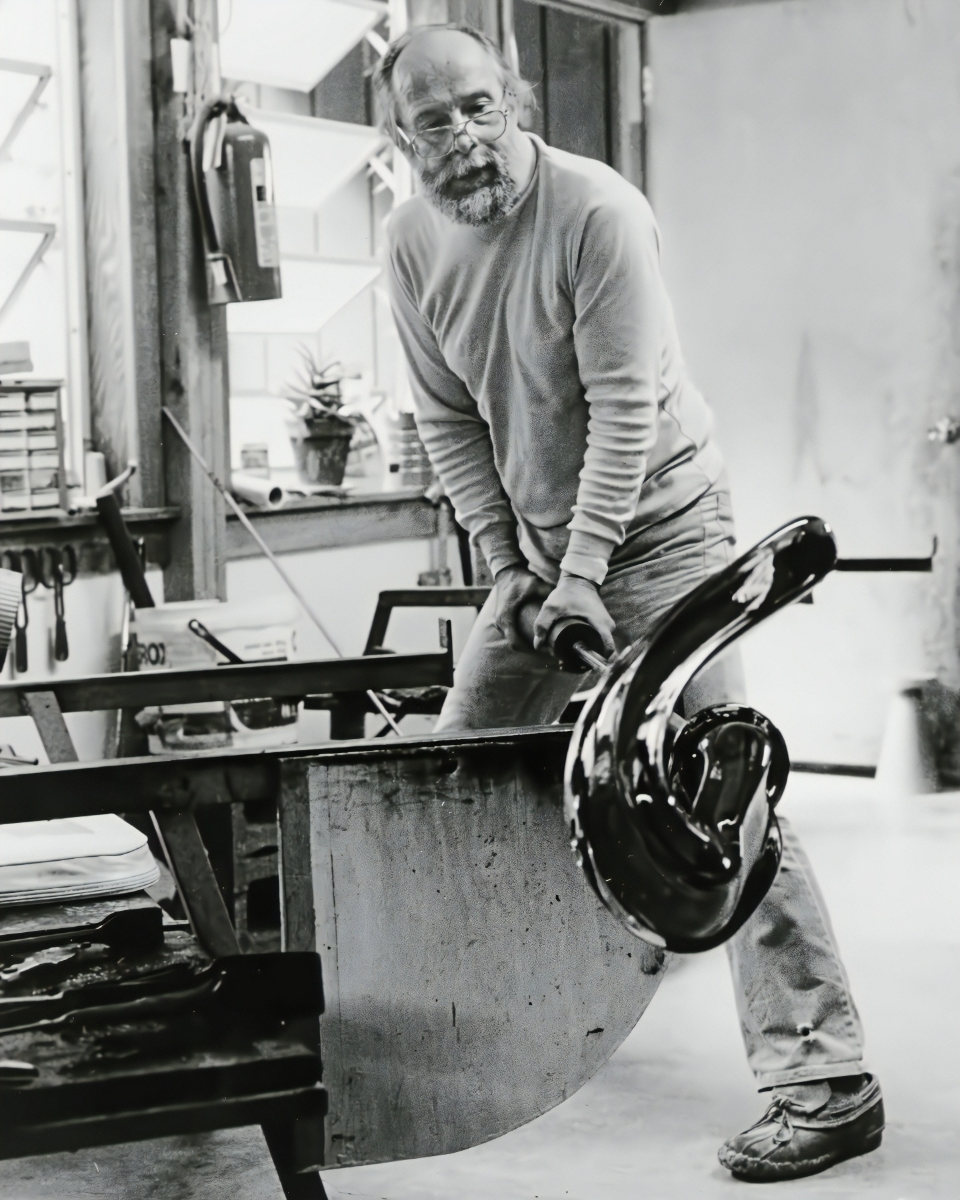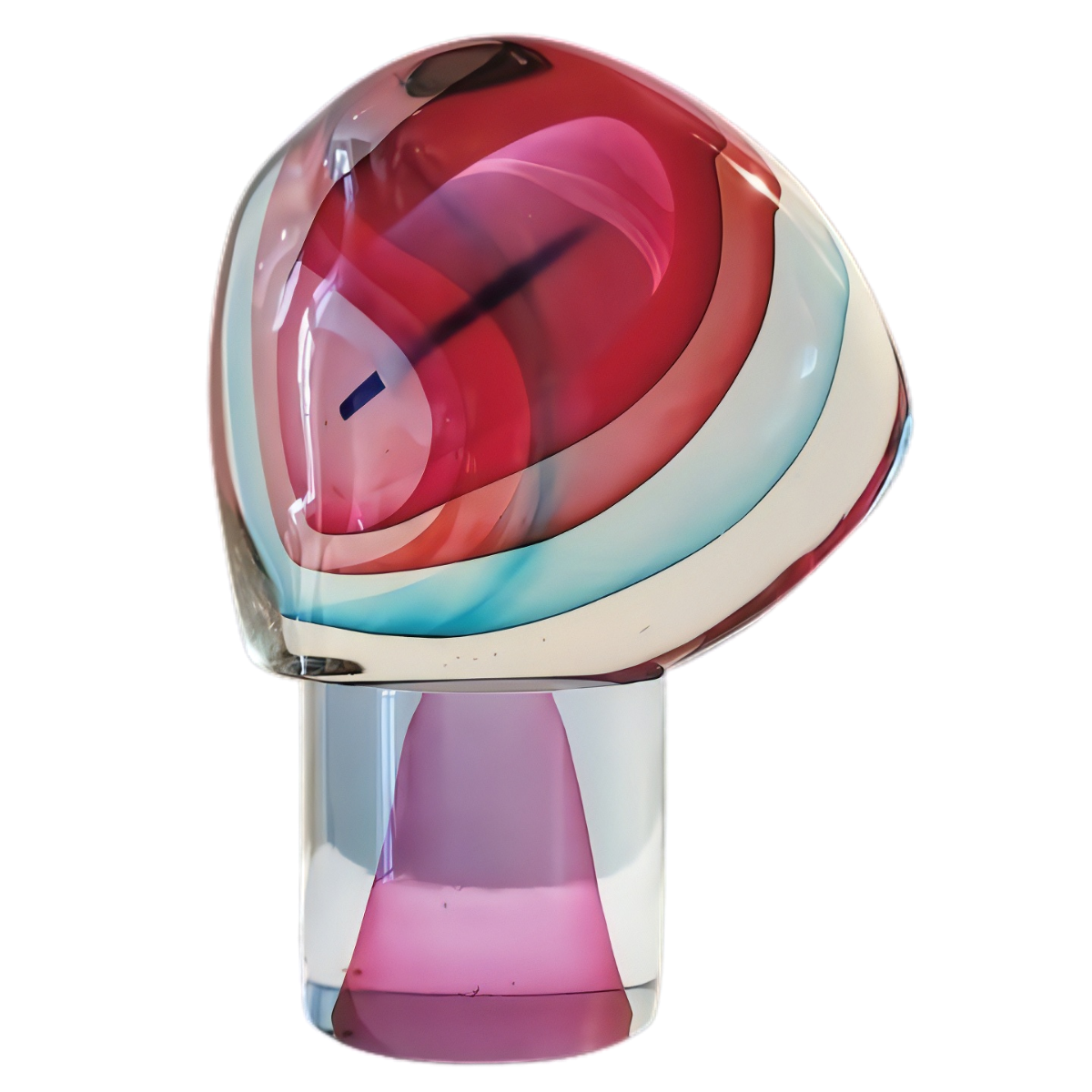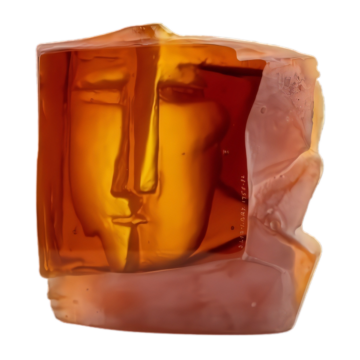Biography
Early Life and Education
Harvey Kline Littleton was born on June 14, 1922, in Corning, New York. His father, Dr. Jesse T. Littleton, was a physicist at Corning Glass Works, known for developing Pyrex glassware. Growing up in this environment, Harvey was introduced to the world of glass at a young age. Despite his father’s wishes for him to pursue physics, Littleton’s passion for art led him to study industrial design at the University of Michigan, where he earned a B.D. degree in 1947. He later received an M.A. from the Cranbrook Academy of Art in 1951.
Career and Contributions
Ceramics to Glass
Initially, Littleton specialized in ceramics and joined the University of Wisconsin–Madison as a faculty member in 1951. However, his interest gradually shifted to glass. By the late 1950s, he was experimenting with glassblowing techniques that allowed artists to work with glass in a studio setting rather than in a factory.
Founding the Studio Glass Movement
In 1962, Littleton organized the first glassblowing seminar for studio artists at the Toledo Museum of Art. This event is widely regarded as the birth of the studio glass movement in the United States. He subsequently established the first university-level hot glass program at the University of Wisconsin–Madison, fostering a new generation of glass artists, including notable figures like Dale Chihuly and Marvin Lipofsky.
Artistic Philosophy and Techniques
Littleton’s work was characterized by a focus on the inherent qualities of glass, such as its transparency and color overlays. He believed that artists should engage directly with the material, allowing for immediate experimentation and creative expression. His techniques and philosophy revolutionized the field, enabling glass artists to create unique, individualized works.
Awards and Recognitions
Harvey Littleton received numerous accolades throughout his career. Notably, he was awarded the Gold Medal of the American Craft Council in 1983, recognizing his significant contributions to the craft.
Exhibitions
Littleton’s work has been featured in various exhibitions, celebrating his legacy and impact on the glass art world. Some of the notable exhibitions include:
- “Look What Harvey Did: Harvey K. Littleton’s Legacy in the Simona and Jerome Chazen Studio Glass Collection” at the Chazen Museum of Art, which highlighted his influence on contemporary glass art.
- “Works on Paper” at the Momentum Gallery, showcasing his vitreography prints and other works.
Personal Life and Legacy
Harvey Littleton married Bess Tamura in 1947, and the couple had five children, four of whom pursued careers in glass art. After retiring from teaching in 1977, Littleton focused on his own art until chronic back problems forced him to stop working with hot glass in 1990. He continued to explore vitreography, a printmaking technique using glass panes, until his death on December 13, 2013, in Spruce Pine, North Carolina.
Conclusion
Harvey Littleton’s pioneering efforts and innovative techniques have left an indelible mark on the world of glass art. As the father of the studio glass movement, his legacy continues to inspire and influence artists globally, solidifying his place as a pivotal figure in the history of contemporary art.




